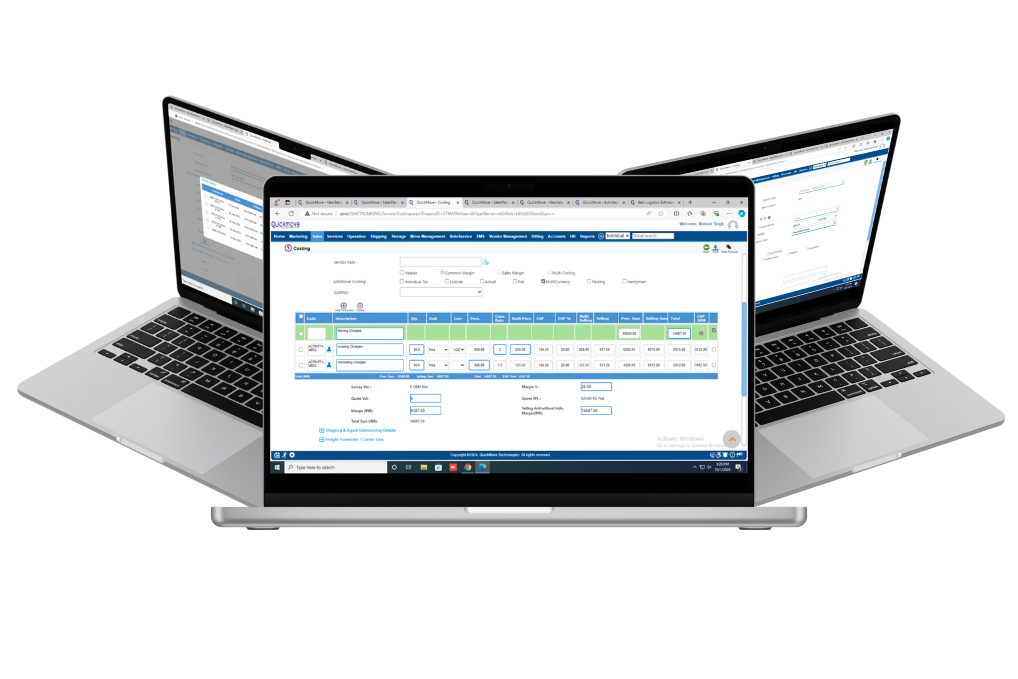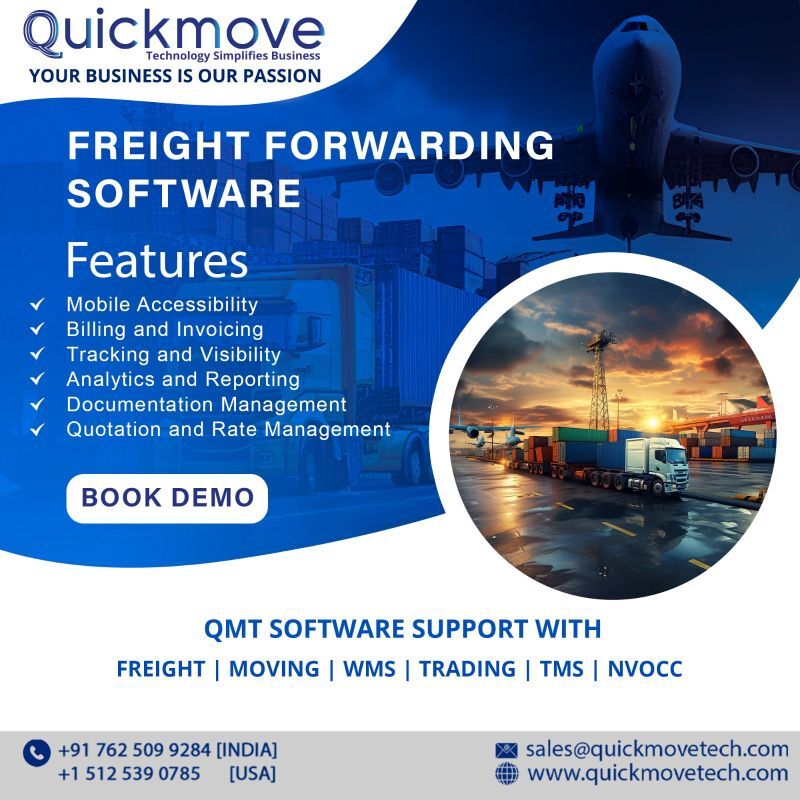Introduction
In today’s global marketplace, effective management of the supply chain is crucial for businesses to stay competitive. With the rapid advancements in technology, freight forwarding software has emerged as a game-changer in simplifying and optimizing logistics operations. This blog explores the benefits and functionalities of freight forwarding software, highlighting how it enables businesses to navigate the digital supply chain efficiently. From streamlining processes to enhancing visibility and improving customer service, freight forwarding software offers a comprehensive solution for managing complex logistics networks.
- Streamlining Operations : Freight forwarding software provides a centralized platform that integrates various aspects of logistics operations, simplifying and streamlining processes. It automates manual tasks such as documentation, invoice generation, and tracking, reducing errors and saving time. The software enables efficient management of shipments, from booking to delivery, ensuring smooth coordination between suppliers, carriers, and customers. By eliminating paperwork and manual data entry, freight forwarding software enhances operational efficiency and reduces the risk of human error.
- Enhancing Visibility: Visibility is crucial in the supply chain, allowing businesses to track the movement of goods, identify bottlenecks, and proactively address issues. Freight forwarding software offers real-time tracking and monitoring capabilities, enabling businesses to have a clear view of their shipments at every stage. It provides alerts and notifications for any delays or disruptions, allowing stakeholders to take immediate action. With robust reporting and analytics features, businesses can gain valuable insights into their supply chain performance, identify areas for improvement, and make data-driven decisions.
- Improving Customer Service : Customer satisfaction is paramount in the logistics industry. Freight forwarding software enhances customer service by providing transparency, timely information, and efficient communication channels. It allows customers to track their shipments, access important documents, and receive automated updates on delivery status. The software enables seamless communication between businesses, customers, and partners, facilitating quick responses to inquiries and addressing any concerns promptly. By providing a superior customer experience, freight forwarding software helps businesses build trust and loyalty with their clients.
- Risk Mitigation: Managing risks in the supply chain is a critical aspect of logistics operations. Freight forwarding software incorporates risk management features, such as compliance checks, regulatory compliance monitoring, and documentation management. It ensures that businesses adhere to international trade regulations, reducing the risk of non-compliance penalties. The software also enables businesses to track and manage insurance policies, minimizing financial risks associated with cargo loss or damage. By proactively identifying and addressing potential risks, freight forwarding software enhances supply chain resilience.
Conclusion
Freight forwarding software has become an indispensable tool for businesses navigating the digital supply chain. Its comprehensive functionalities streamline operations, enhance visibility, improve customer service, and mitigate risks. By adopting such software, businesses can simplify complex logistics processes, save time and costs, and gain a competitive edge in the market. The benefits of freight forwarding software extend beyond operational efficiencies; it empowers businesses to make informed decisions, optimize their supply chain, and deliver exceptional customer experiences. In an increasingly interconnected and fast-paced world, investing in freight forwarding software is a strategic move towards long-term success in managing the complexities of the global supply chain.
 Email Us
Email Us

 Freight Forwarding Software
Freight Forwarding Software Moving/Removal Software
Moving/Removal Software Warehouse Management System
Warehouse Management System Transport Management System
Transport Management System Customer Service Portal
Customer Service Portal Move Survey Quote Pro
Move Survey Quote Pro Digital Logistics Inventory App
Digital Logistics Inventory App

